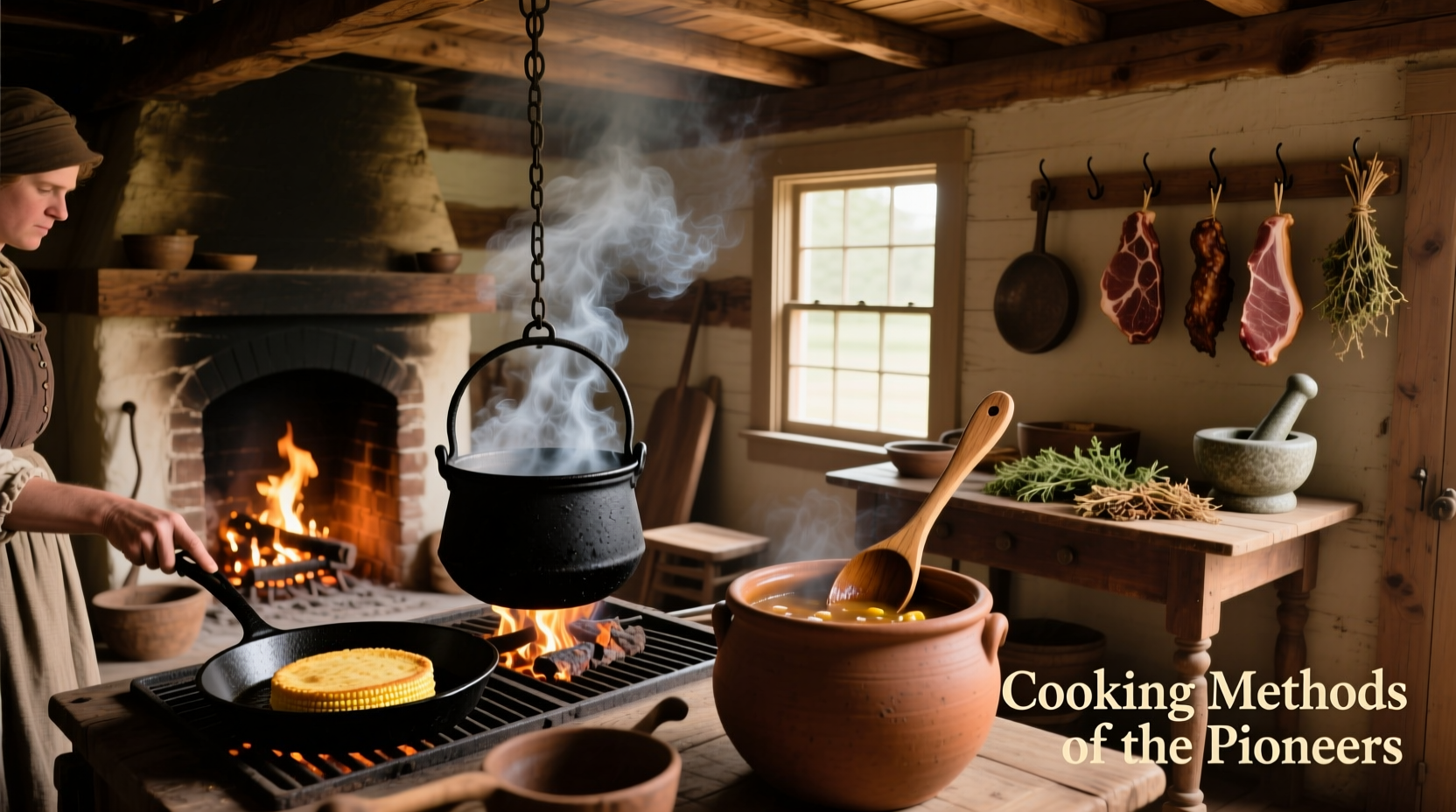Ever wondered how colonial settlers prepared meals without modern kitchens? Understanding what cooking methods were used by the settlers reveals a fascinating blend of European tradition and frontier ingenuity. This guide unpacks the practical techniques that sustained early American communities, from fire management to food preservation—giving you actionable insights into historical cooking that still influence modern hearth cooking today.
Why Settlers' Cooking Methods Matter Today
These techniques weren't just about survival—they shaped American culinary identity. By learning how settlers cooked with limited resources, you gain perspective on sustainable cooking practices and the origins of iconic dishes like cornbread and pot roast. Modern homesteaders and historical reenactors still apply these methods, proving their enduring practicality.
Core Cooking Techniques of Colonial Settlers
Settlers adapted European methods to New World conditions, creating a distinct culinary system centered around the hearth. Here's how they transformed raw ingredients into daily sustenance:
1. Open-Hearth Mastery: The Heart of the Kitchen
Every colonial home featured a massive fireplace serving as the primary cooking station. Unlike modern stoves, hearth cooking required precise fire management:
- Trammels and cranes suspended pots at adjustable heights above flames
- Fire positioning determined cooking speed—coals pushed forward for boiling, pulled back for simmering
- Constant monitoring prevented burning in cast-iron cookware
This method demanded significant skill, as settlers couldn't simply "turn a knob" to adjust heat. Historical records from Colonial Williamsburg show women spent 4-6 hours daily managing hearth fires.
2. Boiling and Stewing: Everyday Simplicity
Iron kettles hanging over the hearth handled 80% of daily cooking. Settlers favored this method because:
- Required minimal supervision compared to roasting
- Conserved fuel by using residual heat
- Transformed tough cuts of meat into tender stews
"Pottages" (one-pot meals of meat, vegetables, and grains) were staples, often simmering for days with ingredients added as available. The Library of Congress archives show settlers reused broth for weeks, enriching flavor with each addition.
3. Roasting and Spit Cooking: For Special Occasions
Whole-animal roasting was reserved for holidays due to its labor intensity:
- Meat hung on iron spits rotated by hand-cranked mechanisms
- Dripping pans caught fat for basting and candle making
- Required constant attention to prevent charring
Smaller homesteads often skipped spit roasting entirely—archaeological evidence from Plimoth Patuxet Museums indicates only 15% of households owned spit mechanisms.
| Cooking Method | Primary Tools | Typical Cooking Time | Common Dishes |
|---|---|---|---|
| Open-Hearth Boiling | Iron kettle, trammel, ladle | 2-4 hours | Pottages, soups, boiled meats |
| Dutch Oven Baking | Camp oven, trivet, coal shovel | 1-2 hours | Bread, cobblers, roasts |
| Spit Roasting | Iron spit, crank, dripping pan | 3-6 hours | Whole fowl, hams, game |
Specialized Techniques for Frontier Survival
Beyond daily cooking, settlers developed resourceful methods to extend food availability:
Dutch Oven Camp Cooking
These versatile cast-iron pots enabled baking without dedicated ovens:
- Buried in hot coals for even bottom heat
- Coals piled on lid for top browning ("coals on the crown")
- Used for bread, pies, and one-pot meals during travel
Frontier families typically owned 2-3 Dutch ovens of varying sizes—a critical investment documented in Colonial Williamsburg's artifact collections.
Food Preservation Systems
With no refrigeration, settlers employed multiple preservation techniques:
- Smoking: Meats hung in chimney smoke for weeks
- Drying: Fruits and vegetables on rooftop racks
- Salting: Fish and pork packed in brine barrels
- Root cellaring: Potatoes stored in insulated underground pits
These methods created seasonal food cycles—abundant fresh produce in summer, preserved foods in winter. The National Park Service notes settlers consumed preserved foods 60% of the year.

Evolution of Settler Cooking: A Timeline
Cooking methods evolved significantly as settlements matured:
- 1607-1650 (Early Settlement): Reliance on Native American techniques like stone-boiling and earth ovens
- 1650-1700 (Established Homesteads): Standardized hearth systems with imported European cookware
- 1700-1775 (Colonial Maturity): Specialized tools like bake ovens and butter churns become common
This progression reflects increasing self-sufficiency—early settlers often traded with Indigenous communities for cooking knowledge, as recorded in Jamestown settlement logs.
Practical Considerations for Modern Enthusiasts
If you're exploring historical cooking, note these context boundaries:
- Seasonal limitations: Hearth cooking doubled as heating source in winter but was unbearable in summer
- Resource constraints: Fuel shortages sometimes forced settlers to eat cold meals
- Skill dependency: Failed batches were common—colonial cookbooks assumed significant hearth experience
Modern recreations often underestimate the physical demands: managing a hearth required constant attention to fire positioning, unlike today's set-and-forget appliances. For authentic results, use cast-iron cookware and maintain consistent coal temperatures between 300-350°F.
Enduring Legacy of Settler Techniques
These methods laid foundations for American cuisine. Dutch oven cooking evolved into modern cast-iron skillet techniques, while hearth-baked cornbread remains a Southern staple. Understanding historical open hearth cooking methods connects us to resourcefulness that's increasingly relevant in today's sustainability-focused kitchens.











 浙公网安备
33010002000092号
浙公网安备
33010002000092号 浙B2-20120091-4
浙B2-20120091-4